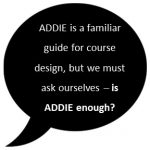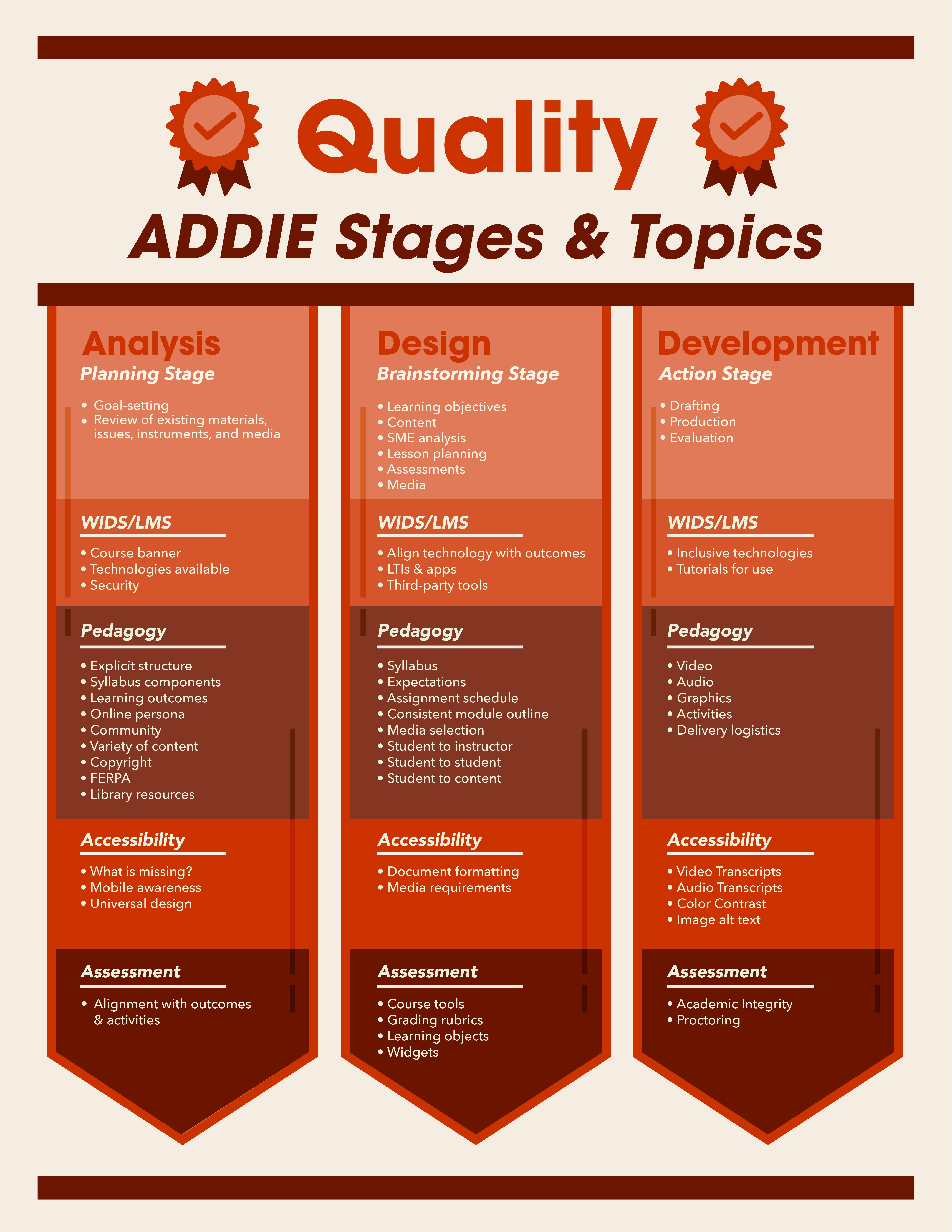Author and Editor: Dr. Denise Lowe
Dear ADDIE,
Our department is working on a foundational framework that will pull together various processes and guidelines faculty encounter when working on developing and implementing their courses and programs…Our faculty development will focus on these as one framework/solution. We would like to do this all within the ADDIE model. What Quality Matters (QM), Worldwide Instructional Design System (WIDS), pedagogy, accessibility, and/or assessment items will come up for them during each stage of the ADDIE model?
Signed,
Program Framers
Dear Program Framers,

Whether working with a single course development process, or building an entire program of courses within a discipline, the task can be daunting. Including and implementing all elements for a solid foundation requires skill and knowledge. It’s like baking a cake—if one or two necessary ingredients are left out, it could spell disaster for the credibility and reputation of the baker! So it is in the world of online pedagogy. Without a proper foundation of the necessary elements related to solid pedagogy and course design, the entire enterprise might crumble and take the credibility of the developers with it.
A structured approach to course and program design can minimize such potential errors. This is where ADDIE comes in to guide the process of a quality course design. Project management is implicit when referring to creating a system of courses—a disciplinary program—and the two systems parallel each other. However, we will leave that discussion for another edition. Instead, we will focus on the use of the ADDIE model (Analysis, Design, Development, Implementation, Evaluation) in the identification of essential elements to course design within each stage. So, let’s break this down in the graphic below.


Quality: ADDIE Stages & Topics by Denise Lowe is licensed under a Creative Commons Attribution-ShareAlike 4.0 International License.
Of course, in the Implementation stage, the faculty might find additional gaps in the alignment of outcomes, activities, and assessments. They may also find materials needing further accessibility options—this is about continual modification. The Evaluation stage provides the opportunity to revise the materials and design further to address any issues revealed, asking the question—have the goals been met?
As the graphic reflects, the issue of Quality is overarching all elements of effective course design. Since the components of quality can be both objective and subjective, every staged topic area can be viewed through a lens of quality design. The explicit content contained in each stage can obviously ebb and flow throughout the entire process as feedback and revisions continue to improve the course design and instruction.
As we continue to ask questions about effective course and program design, instructional designers will need to challenge themselves with developing skills in program management as they continue to sharpen their course design and development skills. The use of the ADDIE model is a familiar guide for course design; the skills necessary for program management may not feel the same way for many, but we must ask ourselves – Is ADDIE enough?
I’m sure there are many more tips that others in the community have found useful. What strategies do you use for effectively engaging faculty in the online course design process? Please share your thoughts with our TOPkit community on LinkedIn!
